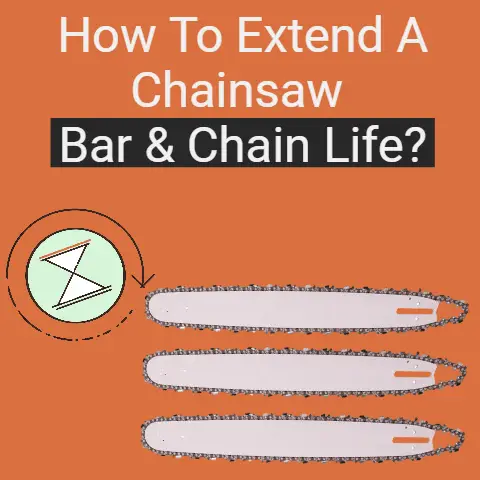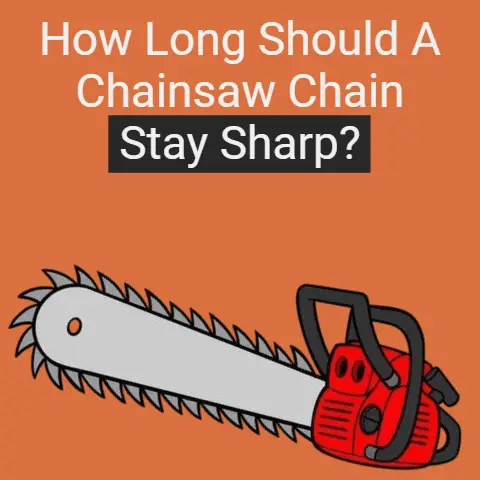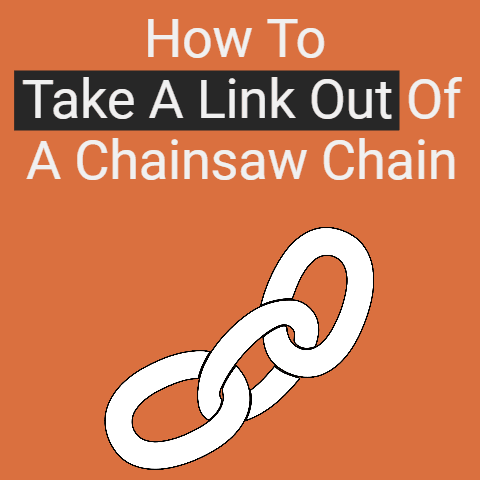Chainsaw Chain Stretched – Causes & Solution (Explained)
Tight and sharp chainsaw chains offer smooth and efficient cutting performance.
It is the operation wear and tears that the chainsaw’s chain stretches over time.
It is a common issue, and it becomes loose with frequent use.
However, you can notice a compromise in their efficiency or cutting performance.
Do Chainsaw Chains Stretch over Time?
Chainsaw chains stretch due to thermal expansion and mechanical wear.
Therefore, there is a need for timely chain maintenance, and to include lubrication to reduce the elongation degree over time.
The chainsaw chains technically do not stretch on their own.
The chain elongates only when you use it repeatedly.
The chainsaw chain loop becomes longer and with frequent use, the material on the bushings and chain links are removed, thereby increasing the clearance of the link.
Owing to this, you will see the chainsaw chains stretch and the chain loops look longer.
The chainsaw chain stretch is not technical, it elongates only with continuous use.
Prolonged users will remove the bushings from the material that connects the chain links, and thus the length of the chainsaw chain experiences an increase.
Chainsaw chains comprise individual links and are held together by cutter teeth through rivets and pins.
In modern chainsaws, the RPMs of the chain range from 5000 to 15000.
The chainsaw chain at such rotational velocities undergoes immense sliding friction while it is sliding on the guide bar rails.
This causes high fatigue stresses and heating effects, thereby resulting in small and gradual material removal over time from the bushings of the chain-link.
This continuous wear rate as time passes, causes the chains to elongate.
As the chainsaw chains stretch, you can see after the initial use a considerable margin elongation.
They elongate gradually with wear and tear.
Even adverse operations accelerate the behavior of chainsaw chain stretching.
Therefore, there is a need to keep chains by offering proper lubrication, protection from rough conditions, and timely sharpening to ensure longevity.
The stretching and loosening of a chainsaw chain are from extreme friction and tension.
The friction is due to cutting the wood that makes the chain hot, and it loosens.
The chain loosens with regular wear.
The heat expands the guide bar, and the chain stretches.
It is normal for any size chainsaw chain to stretch with routine use.
However, if you allow it to become too loose, it may come off easily and pose for you a dangerous situation.
A chainsaw chain loosens and stretches from extreme friction and tension.
The friction is due to cutting through wood, thereby making the chain very hot, and it is the same heat loosening the chainsaw chain.
The heat expands the guide bar and the chain elongates when it cools.
The chain loosens as it wears down on regular use.
How much does a Chainsaw Chain Stretch?
The chainsaw chains considerably stretch to 1/100 per link by an inch, after the first use.
A longer chain featuring 75 links stretches to nearly 0.75 inches, while a shorter chain will not stretch more than half an inch.
On continuing to use the chainsaw, after the initial stretch, you will notice that the fatigue will cause gradual elongation.
The chainsaw chain stretch will be in three types:
Initial stretching of chainsaw chain
The new chains in the chainsaw stretch after first use.
It happens because the rivets in the chainsaw chains connect the links in the chain and feature some clearance amount that is around 1/100 inch in each direction.
Running in one direction a chain means all the rivets are pulled to get clearance on one side.
Therefore, a chainsaw chain with 50 chain links will stretch after the first use by half an inch.
Generally, the new users noticing the chain stretch get concerned.
However, after the first use, it is unavoidable and the chainsaw chain stretches as a routine.
Thus, any chainsaw after the first run must be adjusted to cater to the stretch.
Prolonged wear of chain
With the initial elongation, the chain wears out as they are prone to use regularly.
There are other conditions such as blunt teeth, dirt exposure, touch cutting angles, hard surfaces, and debris contributing to the chain wear and tear, besides its mechanical links.
However, insufficient lubrication is the biggest contributor to wearing the chain.
All these cause the removal of material gradually from the chain links, increasing a small length over time.
Whatever you try, you cannot eliminate the stretch that takes place gradually.
Nevertheless, you can slow down the stretch by giving proper attention and maintenance to the chainsaw chain.
Thermal expansion
A chainsaw running at full throttle is heated up, and the links stretch due to thermal expansion.
Thus, it becomes loose on the guide bar.
It cools down, while the loop returns to its original dimension.
Hence, when hot if the chain becomes loose, you must allow it to get cool so that there is thermal contraction.
Do not use the chain tension adjuster so that you tighten a chain that undergoes thermal expansion.
It is because, on contraction, the same chain may cause irreversible damage to the sprocket and guide bar.
The reasons for the chainsaw stretching include:
A chainsaw keeps working in a harsh working environment, so ensure the lubricant is enough for the chain to keep working.
Keep the chain sharp and clean the debris deposits.
Yet, when the chainsaw chain stretches, the reasons are:
Harsh operating conditions
A huge contributor is the wear rate and chain dullness.
Ensure you wipe the dust off before sawing wood logs.
Avoid more stress on the link as the wear rate accelerates.
Keep a watch on the operating conditions so that the chain stretching is perfect and not very fast.
Worn-out sprocket
A worn-out sprocket is a fatigue behavior of the chainsaw chain.
The sprockets must be replaced once in two chains.
Unscrew the clutch drum, change the sprocket and remove the sprocket using a wrench.
Insufficient lubrication
The dullness in the chain is due to insufficient lubrication.
Check if the oiler pump is faulty, and keep the oil lines free from debris.
Check the manual to ensure the oil setting is as per the recommendation for the chain.
Wrapping up
The constant changes in the weather may stretch the chainsaw.
Thus, it is vital to inspect regularly the chain tension before using it.
It is good to check every time, and, as a part of the routine, there is a need to take proper safety precautions to get the best of your chainsaw performance.






